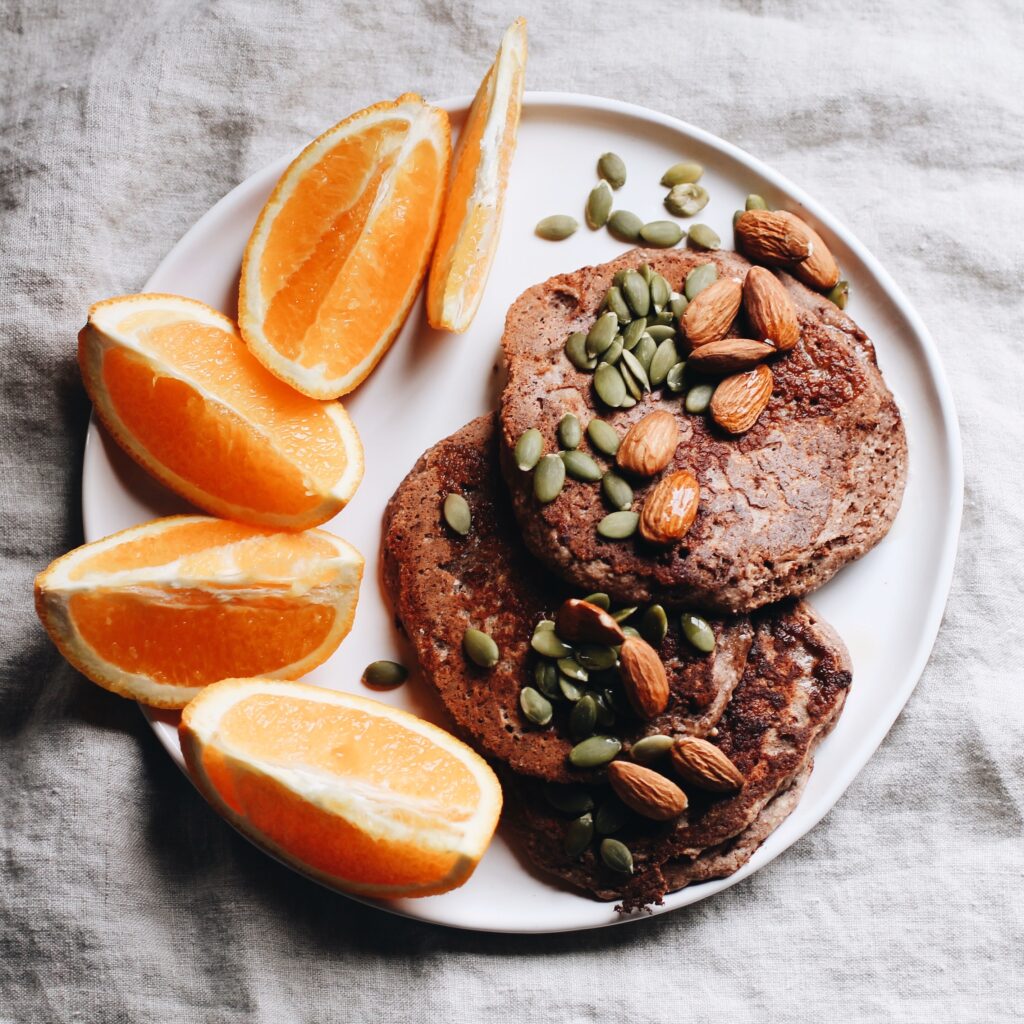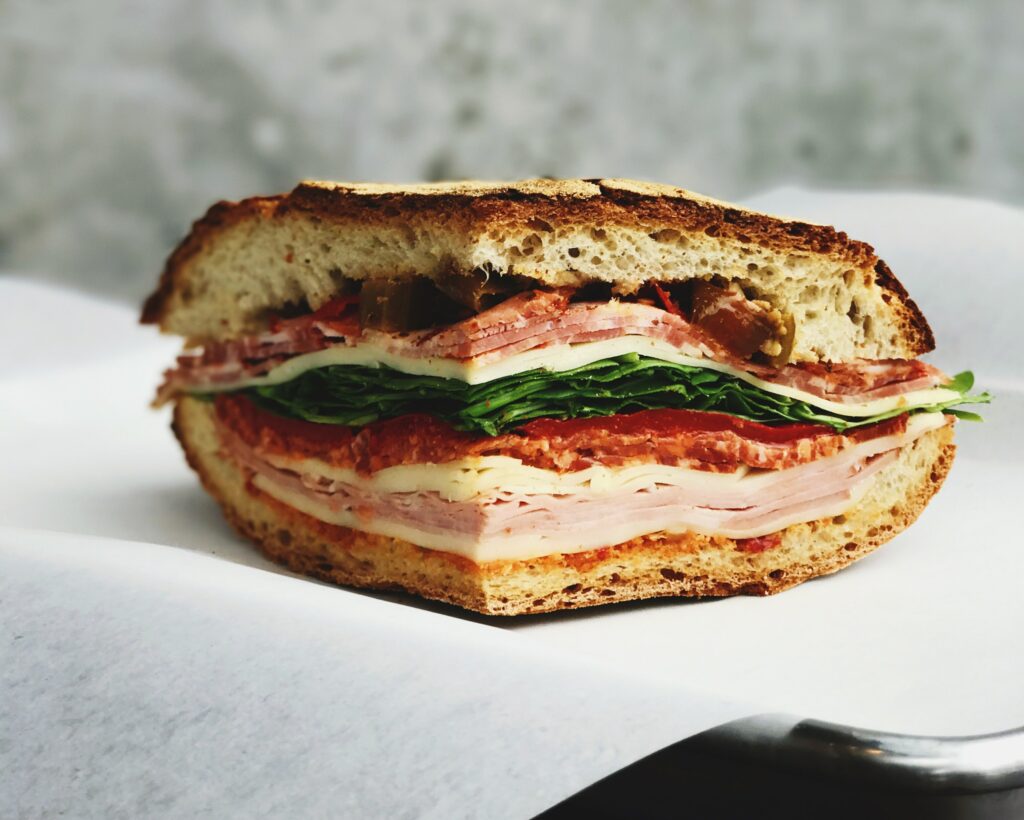If you’re a long-time reader, you know I’m keen on blood sugar awareness. It’s instrumental for both near-term and long-term health. Everyone benefits from understanding blood sugar—not just pre-diabetics and diabetics. Personally, it helped minimize my PCOS symptoms. It also improved my relationship with food and my body. I teach my clients how to balance their blood sugar for better sleep, hormone health, and optimized fertility. For good reason, it’s a hot nutrition topic. Today, I’m sharing easy tips to master your blood sugar. Learn how to hack your health for more energy, optimal well-being, body composition goals, and much more.

What is blood Sugar?
Without knowing exactly what it means, you’ve probably heard of the term. Balancing blood sugar is key—it plays a role in energy, feelings, cognitive function, and more. In fact, you may already be familiar with spikes and dips in blood sugar. Hello, hanger! That said, few recognize its affects on a daily basis. In this article, you’ll learn easy tips to master your blood sugar.
BLOOD SUGAR = THE AMOUNT OF SUGAR (OR GLUCOSE) IN YOUR BLOOD AT ANY GIVEN TIME.
Sugar, or glucose, is the body’s main source of energy. The term “blood sugar” refers to the amount of energy (sugar) present in our bloodstream at one set time. Sugar is produced when we break down any form of carbohydrate. Be it an orange, slice of cake, or piece of toast, that carb is absorbed into our bloodstream. Immediately or eventually, carbohydrates are used as a source of energy.
Benefits of mastering your blood sugar
Once you master you blood sugar, you’ll likely experience a slew of results: more energy, a steadier and better mood, improved sleep, decreased cravings, and even weight loss (if that’s a goal). Not to mention, regular menstruation. Eating properly portioned meals—every 3-4 hours—will help you avoid hanger, as well as improve satiation. Said differently: eating blood sugar friendly-meals will keep you fuller, longer. Over time, blood sugar management can reduce your risk of heart disease, diabetes, and other chronic health issues. To better understand this concept, let’s dive into how carbohydrates are metabolized.

A system of checks and balances
Carbohydrates—from grains, vegetables, and anything with sugar—get broken down into glucose (or blood sugar) molecules. Glucose is the dominant source of ATP. And ATP is the body’s energy currency. It’s tightly regulated by two hormones, insulin and glucagon. When our blood sugar levels are too high, insulin is released. It helps our muscles, liver, and fat cells to store glucose. Conversely, when our blood sugar levels dip low, glucagon is released to increase our blood sugar levels. It’s a delicate yet powerful system. Ultimately, the goal is to maintain stable glucose levels. Armed with easy tips to master your blood sugar, you’ll be equipped to keep blood sugar in check.

Fiber is Your friend
Thankfully, you don’t have to avoid carbohydrates to manage your blood sugar. Whole food sources of carbohydrates—like 100% whole grains, fruits, and vegetables—offer the added benefit of fiber. Fiber helps slow digestion and minimize blood sugar peaks. Though most carbohydrates are broken down into sugar molecules, fiber is an outlier. Instead, fiber passes through the body, undigested (a good thing!). Fiber helps minimize constipation, regulates hunger cues, slows glucose absorption, and reduces the glycemic index.
what is the glycemic index?
The glycemic index is a system of measurement. Specifically, for foods containing carbohydrates. It shows how quickly each food affects your blood sugar (glucose) level. It ranges from 1 to 100. A higher number indicates a more significant blood sugar spike. For example, white rice has a glycemic index of 72, while its whole grain counterpart, brown rice, has 50. This means you’ll experience less of a spike from brown rice. However, the glycemic index doesn’t take the whole meal (or glycemic load) into account. To reduce blood sugar spikes, pair a higher glycemic food with protein, fiber, and fat. For example, enjoy a piece of toast with almond butter and chia seeds, rather than toast with a small smear of butter.

easy tips to master your blood sugar
When it comes to easy tips to master your blood sugar, you want to consider your activity level (exercise), mental health (stress), and sleep. These all affect your blood sugar. Wear a CGM for these insights! Independent of what you eat—which is very important—these are lifestyle areas to focus on:
Commit to Movement
Taking a walk (20 minutes is great!) after a meal can decrease a meal’s impact on your blood sugar levels. Exercise, in general, is instrumental for blood sugar management.
Lower stress
Your stress hormone, cortisol, is linked to blood sugar. Increased stress increases your blood sugar levels. See here for three tips to lower your daily stress.
Prioritize sleep
Sleep deprivation is associated with higher blood sugar levels (and cravings). The correlation is fascinating. Aim to get into bed 15 minutes earlier tonight, and be sure to limit screen time once you near bedtime (ideally 30 minutes to one hour before bed).
Wear a continuous glucose monitor
Want to dig deeper into your blood sugar levels? You can get a continuous glucose monitor, like Levels, to measure your personal fluctuations throughout the day. After all, your triggers will be different than someone else’s. Especially if you’re motivated by data, you’ll love wearing a CGM. In just one month, you’ll learn how to optimize your metabolic health!

Start Your day with a balanced breakfast
Last but not least, let’s talk about breakfast. Just like completely cutting carbs isn’t the solution to balanced blood sugar, neither is waiting until noon to eat your first meal of the day. Think of your blood sugar levels like a horizon. When your blood sugar levels spike too quickly, they fall just as fast. Those crashes can bring along feelings of fatigue, irritability, and sweet cravings. This is why breakfast is especially important. If you start the day with a balanced meal, you’re less likely to hop on the blood sugar rollercoaster. A balanced breakfast includes adequate protein (ideally 20-30 grams), fiber, and healthy fats. Examples: protein-packed smoothie, slice of frittata with avocado toast (on sourdough or sprouted grain bread), and overnight ‘no oats.’
If you need lunch ideas, I’ve got you covered!

This article is for informational purposes only. It is not, nor is it intended to be, a substitute for professional medical advice, diagnosis, or treatment and we recommend that you always consult with your healthcare provider.



Leave a Reply